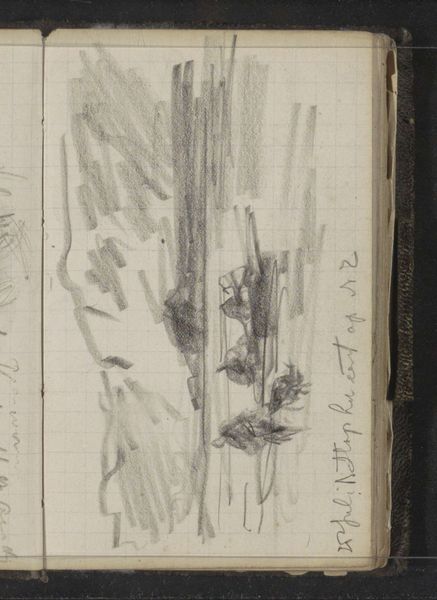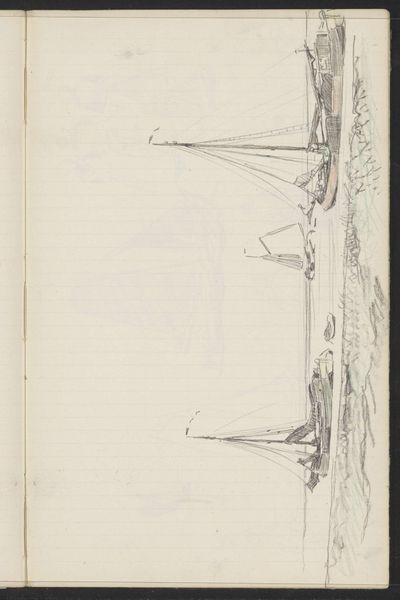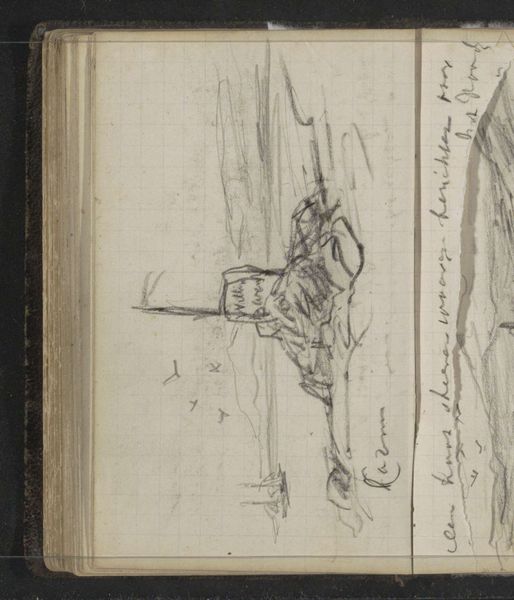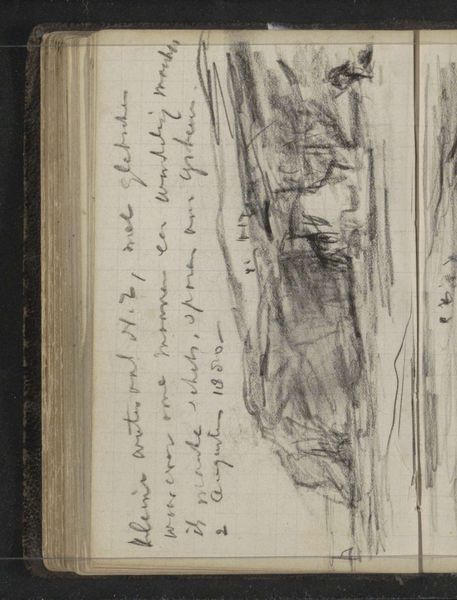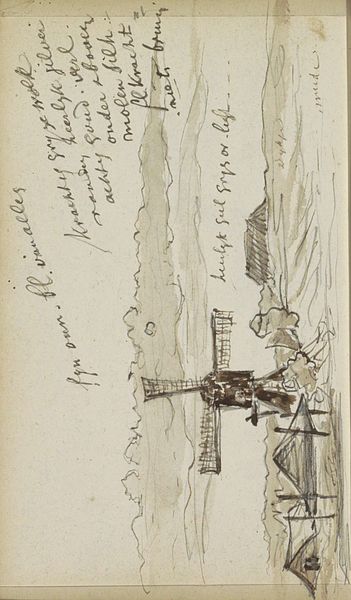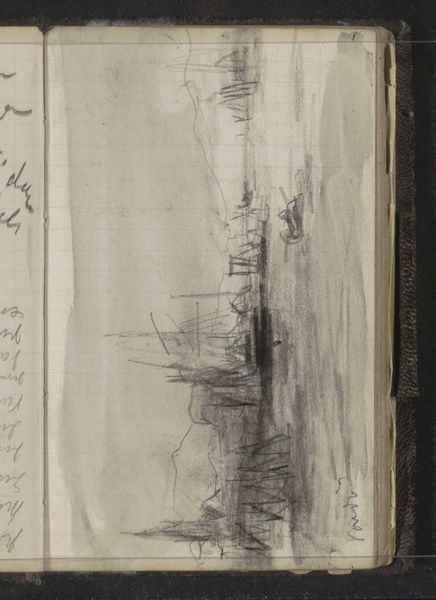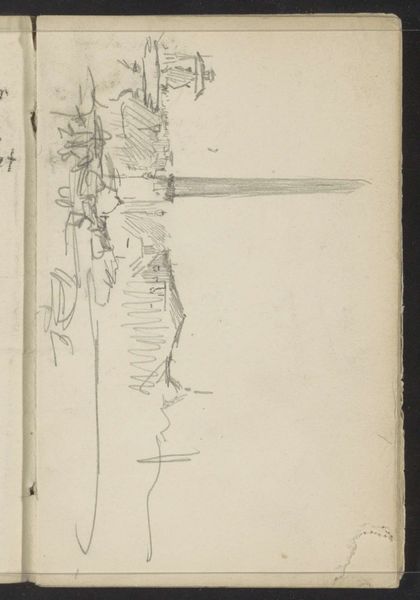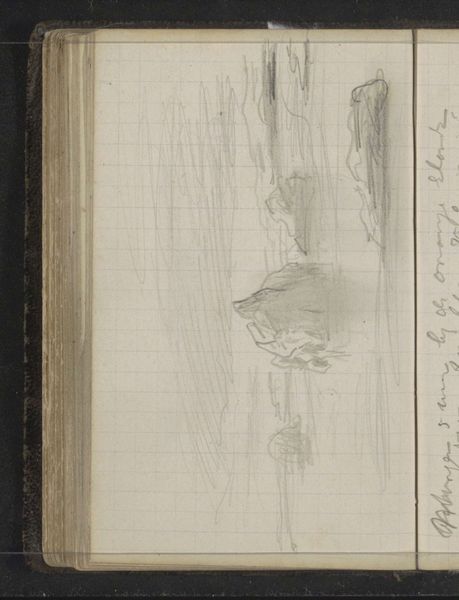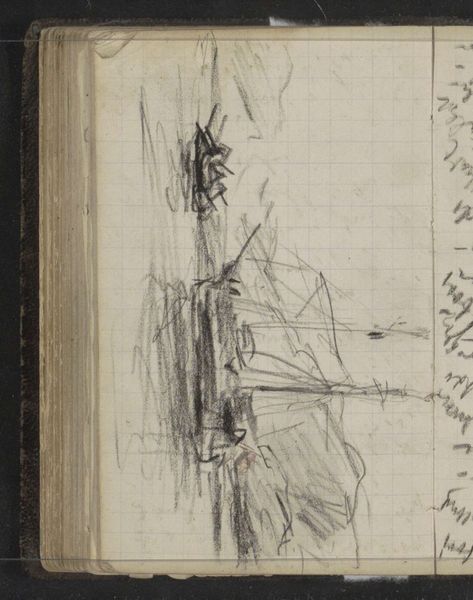
Schoener Willem Barentsz op zee nabij de Kruisbaai, Nova Zembla Possibly 1880 - 1889
0:00
0:00
drawing, paper, pencil
#
drawing
#
landscape
#
paper
#
coloured pencil
#
pencil
#
line
#
sketchbook drawing
Copyright: Rijks Museum: Open Domain
Editor: This drawing by Louis Apol, possibly from the 1880s, is titled "Schoener Willem Barentsz op zee nabij de Kruisbaai, Nova Zembla." It's done with pencil and colored pencil on paper. The initial impression is one of starkness, with the angular lines creating a very tense composition. What do you see in this piece? Curator: Formally, I am struck by the stark contrast achieved through the artist's considered application of line. The predominantly monochrome palette further accentuates the composition's structure. Notice how the sharp, angular lines define the vessel and the surrounding ice. The use of line emphasizes the fragile construction of the boat against a monumental landscape. Do you observe the lack of curvature? Editor: I do. It's almost entirely straight lines, even for the waves. What does that signify? Curator: It amplifies the sense of tension we spoke about and introduces a formal visual conflict. It moves beyond simple representation to abstract, in its suggestion of natural forms such as water as fractured planes. We should also note how Apol manipulates the viewer's focus through careful line weight. Editor: So, the thicker lines are intended to draw the eye to specific points, the ship presumably? Curator: Precisely. The density of the graphite invites our sustained observation there, while lighter marks allow the eye to flow outwards, appreciating the broader scene. Editor: It is amazing how much Apol conveys through what appear to be rudimentary marks. I am used to looking for color. Thinking about structure has opened a new way for me to engage with it. Curator: I agree, that focus on line and form amplifies this work. This drawing offers a unique insight into how Apol construes spatial depth.
Comments
No comments
Be the first to comment and join the conversation on the ultimate creative platform.


